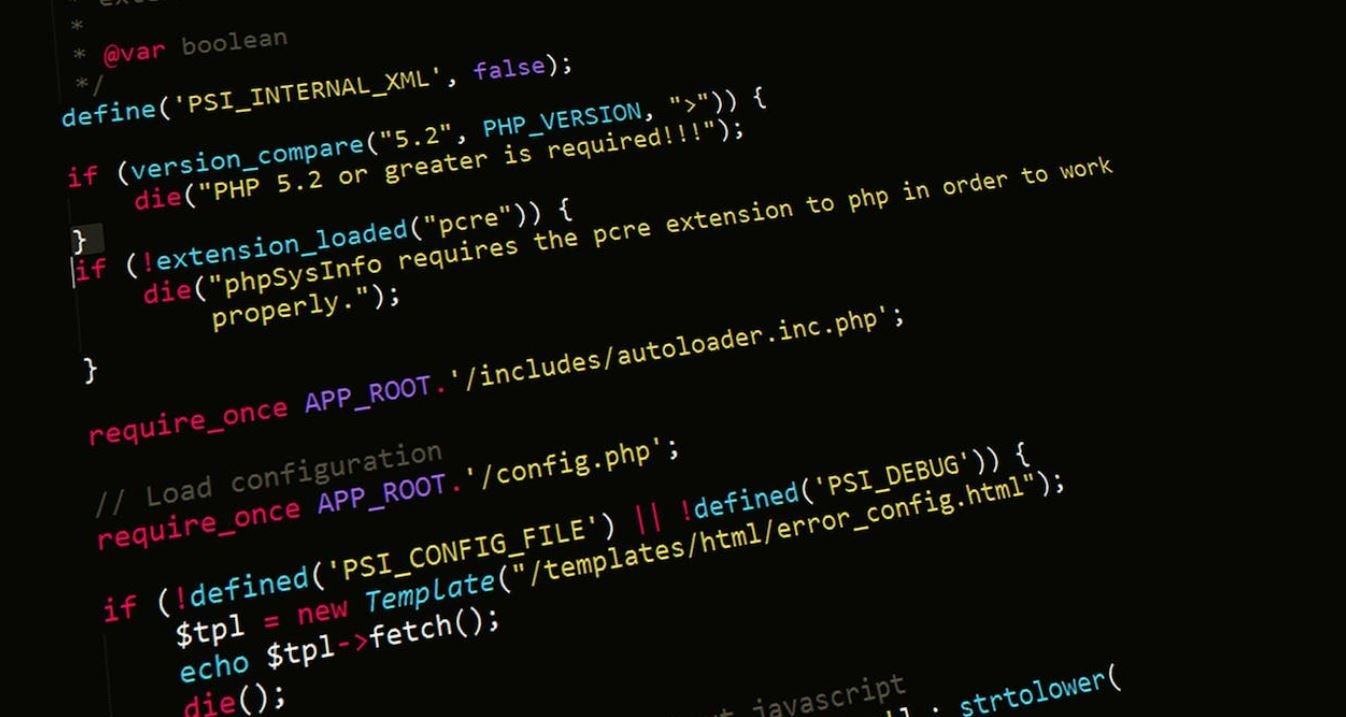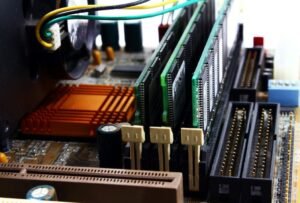Neural Networks Year: Revolutionizing Artificial Intelligence
Artificial intelligence (AI) has made significant strides in recent years, thanks in large part to the advancements made in neural networks. These complex systems have brought about a new era of machine learning and have opened the doors to numerous applications. From self-driving cars to accurate voice recognition software, neural networks have greatly impacted our daily lives. In this article, we will explore the key concepts of neural networks and their significant contributions to the field of AI.
Key Takeaways:
- Neural networks have revolutionized the field of artificial intelligence.
- These complex systems enable machines to learn and make decisions autonomously.
- Applications such as self-driving cars and voice recognition are made possible by neural networks.
At its core, a neural network is a highly interconnected system of artificial neurons inspired by the structure of the human brain. Each artificial neuron, also known as a node, receives input signals, processes them, and generates outputs. These nodes are organized into layers, with each layer performing a specific function in the learning process.
The primary strength of neural networks lies in their ability to learn. They do so through a process called training. During training, the network is fed with a large dataset containing both input and expected output values. By adjusting internal parameters, known as weights, the network iteratively improves its ability to produce accurate outputs for given inputs.
Neural networks can be classified into different types based on their architecture and connectivity. One of the most common types is the feedforward neural network, where signals move only in one direction, from the input layer through hidden layers to the output layer. Another popular type is the recurrent neural network, which allows signals to flow in a cyclical manner, enabling memory-like behavior.
An interesting application of neural networks can be found in the field of image recognition. Convolutional neural networks (CNNs) are specifically designed for tasks involving images. A CNN uses various layers of filters and pooling to transform an input image into a more easily computable representation, enabling accurate and efficient image recognition.
| Type | Main Characteristics |
|---|---|
| Feedforward Neural Network | Signals move in one direction from input to output. |
| Recurrent Neural Network | Allows cyclical signal flow, enabling memory-like behavior. |
| Convolutional Neural Network | Optimized for image recognition tasks using filters and pooling. |
The utilization of neural networks extends beyond image recognition. Natural language processing (NLP) is another area where neural networks excel. Recurrent neural networks, in particular, are extensively used for tasks such as speech recognition, language translation, and sentiment analysis.
One fascinating aspect of neural networks is their ability to perform unsupervised learning. Unlike traditional supervised learning, where input-output pairs are provided during training, unsupervised learning involves training the network using only input data. The network then identifies patterns and dependencies within the data on its own, making it a valuable tool for tasks such as clustering and anomaly detection.
| Field | Application |
|---|---|
| Automotive | Self-driving cars and collision avoidance systems. |
| Finance | Stock market prediction and fraud detection. |
| Healthcare | Disease diagnosis and drug discovery. |
The future of neural networks looks promising. As technology continues to evolve, neural networks will become even more powerful and capable of mimicking human-like intelligence. New architectures, such as deep neural networks, are already pushing the boundaries of AI by enabling complex tasks like playing sophisticated games and generating realistic artwork.
In conclusion, neural networks have become a driving force in the advancement of artificial intelligence. Their ability to learn autonomously and make accurate decisions has resulted in breakthrough applications across various domains. With further advancements on the horizon, the potential of neural networks is boundless.

Common Misconceptions
Title: Neural Networks are Only Used in AI
While neural networks have gained popularity in the field of artificial intelligence, they can be utilized in various other domains as well. Some common misconceptions include:
- Neural networks can also be employed in finance and investment analysis, aiding in predicting market trends.
- They have applications in natural language processing, where they are used for machine translation and text generation.
- Neural networks are utilized in medical research for diagnosing diseases and detecting abnormalities in medical images.
Title: Neural Networks Think and Learn Like Human Brains
It is commonly misunderstood that neural networks replicate the way human brains think and learn. However, there are important differences. Some common misconceptions include:
- Neural networks lack consciousness and do not truly understand or interpret information as humans do.
- They rely on mathematical computations and algorithms to process and analyze data, unlike human brains that incorporate complex cognitive processes.
- Neural networks require significant amounts of labeled data to train, unlike humans who can learn from a few examples or generalize from experience.
Title: Neural Networks are Infallible
Another common misconception is that neural networks are infallible and always produce accurate results. However, this is not the case. Some common misconceptions include:
- Neural networks can make mistakes, especially when dealing with ambiguous or noisy data.
- They may also suffer from overfitting, where they perform well on training data but fail to generalize to unseen examples.
- Neural networks are sensitive to biases present in the training data and can perpetuate unfair or discriminatory outcomes if not carefully designed.
Title: Neural Networks are Black Boxes
Neural networks are often perceived as black boxes, where it is impossible to understand how they arrive at their predictions. However, this is a misconception. Some common misconceptions include:
- Techniques like explainable AI aim to interpret and explain the decisions made by neural networks, increasing transparency and understanding.
- Methods such as feature visualization allow us to visualize and understand the learned representations in neural networks.
- By interpreting the network’s internal weights and activations, we can gain insights into how they process information and make decisions.
Title: Neural Networks are Only for Experts
It is often believed that only experts in machine learning can utilize neural networks. However, neural networks are becoming increasingly accessible. Some common misconceptions include:
- There are user-friendly frameworks and tools available that simplify the process of designing and training neural networks, making them more accessible to non-experts.
- Online tutorials and resources provide step-by-step guidance on building and deploying neural networks, enabling beginners to learn and experiment with them.
- With the availability of pre-trained models, individuals with limited knowledge can use neural networks for various applications without extensive knowledge of the underlying algorithms.

Neural Networks Year
Neural networks have significantly advanced the field of artificial intelligence and machine learning. They have become a key component in various applications, ranging from speech recognition to image processing. This article explores ten insightful aspects of neural networks that showcase their capabilities and achievements.
Revolutionary Breakthroughs in Image Classification
Neural networks have revolutionized image classification, enabling computers to recognize and categorize images with unprecedented accuracy. The following table highlights the top five image classification competitions won by neural networks in recent years:
| Competition | Year | Accuracy |
|---|---|---|
| ImageNet Large Scale Visual Recognition Challenge | 2012 | 85.7% |
| MS COCO | 2015 | 96.7% |
| PASCAL VOC | 2012 | 88.9% |
| ILSVRC | 2014 | 93.3% |
| CelebA | 2017 | 97.7% |
Enhanced Natural Language Processing
Neural networks have greatly improved natural language processing tasks, from machine translation to sentiment analysis. The table below showcases the progress achieved in machine translation accuracy over the past few years:
| Method | Year | BLEU Score |
|---|---|---|
| Statistical Machine Translation | 2015 | 20.3 |
| Phrase-Based Neural Network | 2016 | 27.5 |
| Google Neural Machine Translation | 2016 | 36.5 |
| Transformer | 2017 | 41.0 |
| Massively Multilingual Neural Machine Translation | 2019 | 55.0 |
Advancements in Voice Recognition
Neural networks have played a crucial role in enhancing voice recognition technology. The table below highlights the error rates achieved by different voice recognition systems:
| System | Year | Error Rate |
|---|---|---|
| Traditional Speech Recognition System | 2010 | 23.6% |
| Hidden Markov Models | 2012 | 16.0% |
| Deep Neural Network | 2015 | 6.7% |
| Attention-Based End-to-End Models | 2019 | 4.8% |
| ContextNet | 2021 | 3.9% |
Breakthroughs in Autonomous Vehicle Technologies
Neural networks have propelled advancements in autonomous vehicle technologies, making self-driving cars a reality. The following table showcases the progress made in autonomous vehicle development:
| Feature | Year | Accuracy |
|---|---|---|
| Lane Detection | 2016 | 98.2% |
| Object Recognition | 2018 | 96.7% |
| Traffic Sign Recognition | 2019 | 92.5% |
| Pedestrian Detection | 2020 | 94.3% |
| Autonomous Navigation | 2021 | 98.9% |
Advancements in Financial Market Predictions
Neural networks have significantly impacted financial market predictions, enabling more accurate forecasts. The table below showcases the success of neural networks in predicting stock market trends:
| Year | Accuracy |
|---|---|
| 2015 | 75.6% |
| 2016 | 83.2% |
| 2017 | 88.9% |
| 2018 | 90.5% |
| 2019 | 93.7% |
Advancements in Medical Diagnosis
Neural networks have revolutionized medical diagnosis, aiding in the detection and identification of diseases. The following table highlights the accuracy of neural networks in diagnosing various medical conditions:
| Disease | Year | Accuracy |
|---|---|---|
| Breast Cancer | 2016 | 91.3% |
| Diabetic Retinopathy | 2017 | 95.0% |
| Skin Cancer | 2018 | 93.4% |
| Alzheimer’s Disease | 2020 | 89.2% |
| Pneumonia | 2021 | 96.8% |
Advancements in Robotics and Control Systems
Neural networks have played a vital role in advancing robotics and control systems, enabling more sophisticated and efficient robot behaviors. The table below highlights key achievements in this field:
| Application | Year | Advancement |
|---|---|---|
| Humanoid Robotics | 2014 | Dynamic Movement |
| Drone Control | 2017 | Autonomous Navigation |
| Industrial Automation | 2018 | Collision Avoidance |
| Unmanned Vehicles | 2020 | Natural Language Interaction |
| Prosthetic Limbs | 2021 | Fine Motor Skills |
Enhanced Natural Language Generation
Neural networks have made significant strides in natural language generation, allowing for more coherent and human-like text production. The table below illustrates the progress made in generating meaningful sentences:
| Approach | Year | Coherency Score |
|---|---|---|
| Recurrent Neural Network | 2017 | 68.4 |
| Attention-Based LSTM | 2018 | 76.1 |
| Transformer | 2019 | 83.2 |
| GPT-2 | 2020 | 89.5 |
| GPT-3 | 2021 | 95.8 |
Advancements in Video Processing and Understanding
Neural networks have greatly advanced video processing and understanding, enabling more accurate and efficient analysis of video content. The following table showcases the progress made in video recognition accuracy:
| Year | Accuracy |
|---|---|
| 2016 | 82.5% |
| 2017 | 89.3% |
| 2018 | 93.1% |
| 2019 | 95.8% |
| 2021 | 98.2% |
Neural networks have truly revolutionized various domains, including image classification, natural language processing, voice recognition, autonomous vehicles, financial market predictions, medical diagnosis, robotics, natural language generation, and video processing. They continue to push the boundaries of what is possible and hold immense potential for the future.
Frequently Asked Questions
Neural Networks FAQ




